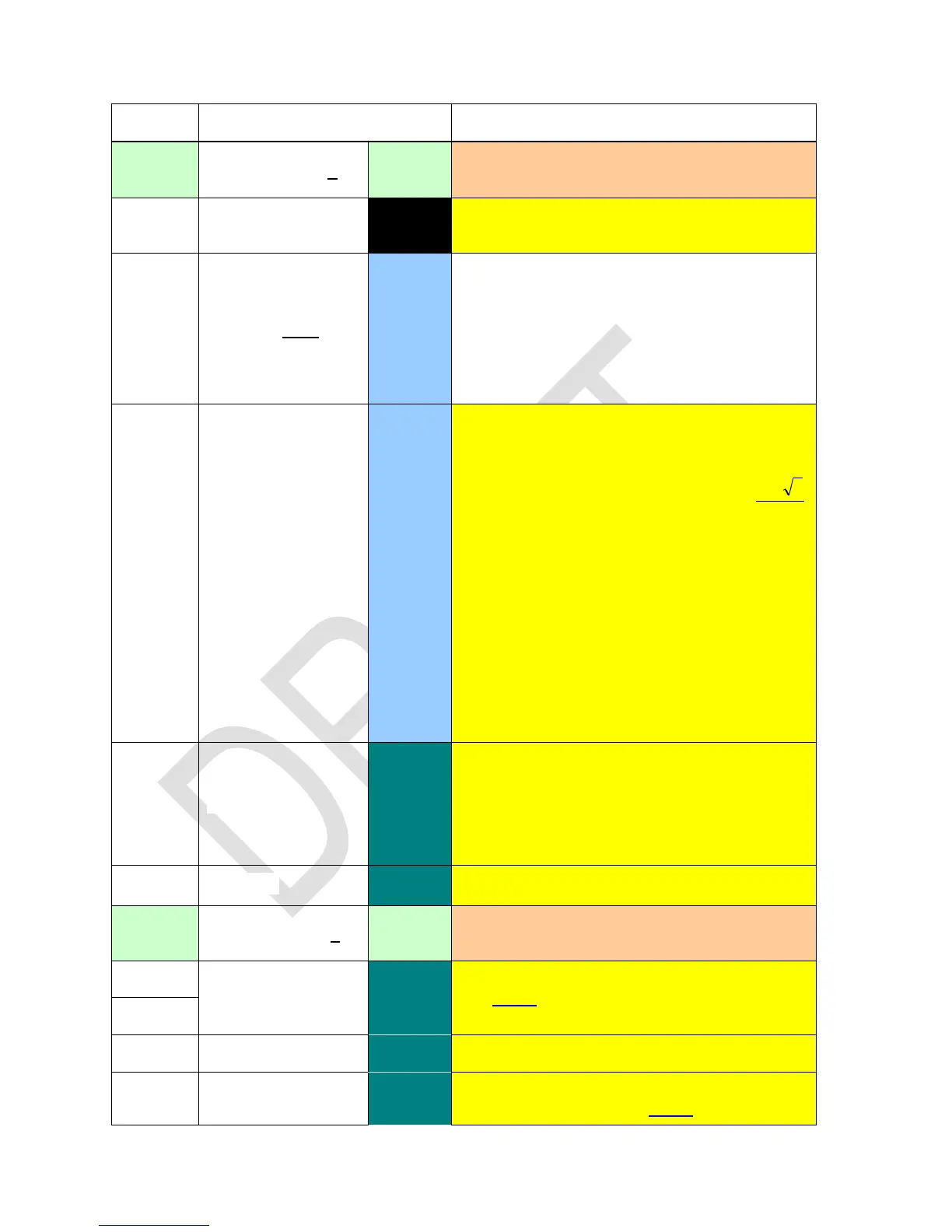Works like n (up to 63) consecutive SLs on
HP-16C. SL 0 executes as NOP.
entered for low battery voltage.
Solves the equation f(x) = 0 , with f(x) calcu-
lated by the routine specified. Two initial esti-
mates of the root must be supplied in X and Y
when calling SLV. For the rest, the user interface
is as in HP-15C. This also means SLV acts as a
test, so the next program step will be skipped if
SLV failed to find a root.
Solves the quadratic equation
,
with the real parameters put on the stack
[ c, b, a
If
in Y and X. In a program, the step after
SLVQ will be executed.
Else, SLVQ returns the real part of the first
complex root in X and its imaginary part in Y
(the 2
nd
root is the conjugate of the first see
CONJ). If run directly from the keyboard, the
complex indicator is lit then in a program,
the step after SLVQ is skipped.
In either case, r is returned in Z. Higher stack
levels are kept unchanged. L contains c.
Returns the integer sign mode set, i.e.
complement,
-.
True if x is special, i.e. infinity or NaN.
Works like n consecutive SRs on HP-16C. SR 0
executes as NOP.
Sets the stack size to 4 or 8 levels, respectively.
See above. The same will happen if stack size is
changed via RCLM.
Returns the number of stack levels accessible.
Shows the status of all user flags, similar to
STATUS on HP-16C. See above.

